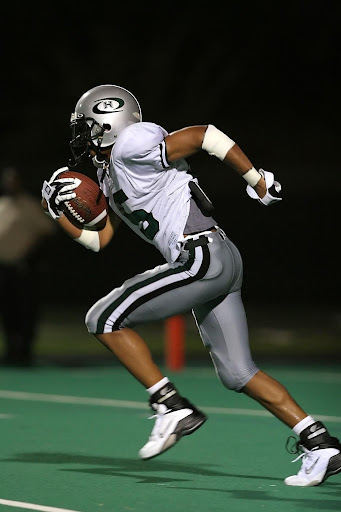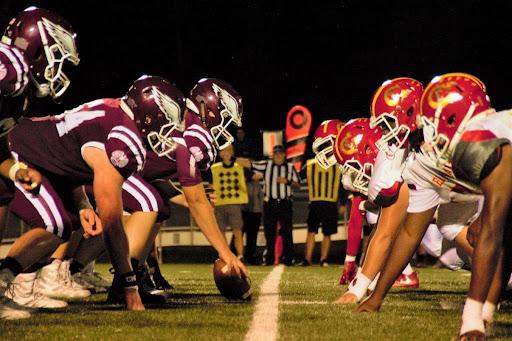

Many of us are passionate about football. We love to watch those professionals at the highest level compete with each other. Whether or not you have played the sport, you can appreciate the hard work and grind the players show on the field.
Football players are some of the most athletic people in the world. Players in the NFL must maintain an on-season and off-season diet to stay at the top of their game.
In the article, we will share with you what NFL players do to stay in shape on and off-season to maintain their physique. We will show you the types of workouts they do and what they focus on in case you are a football player or just looking for new exercises.
Off-Season Fitness
To be a top-shelf NFL player, you must have a disciplined approach to all aspects of fitness, along with strength training. Off-season, there is no shortcut to improving your fitness and quality of life other than a commitment to a tried and tested plan.
Therefore, each component of offseason fitness must be looked at to meet the physical demands of an actual football player.
1. Eat Nutritious Food
The goal of any diet plan is to improve the quality of your overall health. To unlock your true potential, you must change how you look at food.
For example, how many meals do you eat each day? Do you get enough calories each day? Is your protein intake sufficient to increase your muscle mass? Are you eating food from all the important food groups?
Poor eating habits compromise your development as a player and influence your long-term health so make sure you are eating plenty of nutritious foods that fit your macros.
2. Train Hard
The second factor that contributes to your physique and fitness is training. How good you are as a football player hinges upon how well you train. However, there are diverse ways of making the body a more robust machine.
First, do not neglect your cardio and aerobic workouts. Cardio is essential in the NFL because it improves energy delivery into cells. Scientists have identified that interval training, HIITS, and nutritious food can improve your energy levels. It also enhances energy replenishment so that more is available in game situations.
Keep in mind that there are various ways to look at cardio. For instance, running is a simple exercise that may optimize oxygen delivery depending on the intensity and frequency. In the NFL, however, short sprints and jogs are more valuable than spending half a day on a treadmill.
Second, strength training is imperative. NFL players are known for having sculpted bodies and the ideal physique. This starts with training in the gym. If you want to get a body like an NFL player, you will want to train your shoulders, back, and neck. Many NFL players have well-defined shoulders and upper body. More muscular arms and shoulders can help you with all the hand fighting in the game if you are a player.
Furthermore, the glutes are the most important muscles to develop. Besides being among the most powerful in the body, scientists find a link between athletic performance and glute size. Evidence suggests that football players can improve their sprints by developing solid glutes. In football, there’s much sprinting involved, so training your glutes will take your competitive edge a notch higher.
3. Rest
One of the most overlooked components in off-season fitness is rest. You deserve a break after a tough season. Give your muscles and joints adequate time to recover from stress and injury.
Muscles sustain a lot of metabolic stress, which must be undone for any positive gain. Recovery from muscle soreness and pain can also increase your energy levels and athletic performance. However, there are other reasons why you will need rest. For example, if you sustain an injury to a joint or muscle, you should get enough time to nurse it.
In addition, another critical angle is post-workout rest to enhance the elimination of lactate. Lactate is a metabolic compound that causes muscle soreness and pain. Apart from causing discomfort, it can cause fatigue and reduced performance.

In-Season NFL Strength Training
Football is a sport where high levels of strength and speed mean a lot. During the off-season, players spend most of their time ironing out areas of weakness and intensively working out to improve their athleticism.
But how can pro-players plan their workouts, have enough recovery time, and have a solid fitness plan in-season?
In coming up with a solution, you must first factor in demands that were not met off-season. Furthermore, mentality and technical development is a priority for many coaches. So, key areas that may be developed in the season’s program include:
1. Low Volume Training
We have already mentioned that football players face an increased workload soon as the season rolls. Therefore, unnecessary strain must be avoided by having a workout program with a reduced workload. This emphasizes the importance of activating as many muscles as possible without incurring a risk of injury.
2. Full-Body Workouts
In-season training demands that as many muscle groups as possible be activated to avoid spending too much time in the gym. Football players can reduce their training volume and adequately recover from injury or muscle soreness if they learn to train the whole body in one go.
3. Avoiding Injury
This implies that your training needs to be modified to the player’s current physical form rather than blindly following a routine set in stone. Therefore, the program must have just the right volume of exercises, be dynamic to fit your needs, be done at the right intensity, and avoid the aggravation of injuries.
That said, we can look at a simple in-season training regimen.
| Monday | Tuesday, simple light workouts | Wednesday, intense with the most workload | Thursday | Friday, light skill session | Saturday | Sunday |
|---|---|---|---|---|---|---|
| Squats, 3 x 12 reps | Squats, 3 x 5 reps | Squats, 3 x 4 reps | Rest or do Wednesday's workout if you didn't have the chance | Push jerks, 2 x 5 reps | Rest | Game day |
| Lat pulldowns, 3 x 12 reps | Bench press, 3 x 5 reps | Bench press, 3 x 6 reps | Hang cleans, 3 x 3 reps | |||
| Dumbbell press, 3 x 10 reps | Pull-ups, 3 x 5 reps | Skull crushers, 2 x 10 reps | Hang Snatch, 3 x 3 reps | |||
| Deadlift, 3 x 8 reps | Power cleans 4 x 2 reps | Power snatch, 3 x 3 reps | ||||
| Push-ups, 4 x 10 reps | Power clean, 4 x 2 reps | |||||
| Pull through, 2 x 8 reps |
Healthy Foods Every NFL Player Needs
Athletes need a lot of food to keep up with the demands of the game. NFL players eat much more food than the average person would typically eat. Most football players eat at least 4,000 to 6,000 calories per day while in season. Diet goes a long way in enhancing stamina. So what diet regimens are ideal when you train like an athlete?
The most recommended diet plans will stress the need for hydration, vegetables and fruit, lean protein sources, and seafood. In addition, they work best if processed carbs and sugary treats were kept at bay. Intense workouts damage cells by promoting inflammation at a cellular level. Therefore, fitness experts recommend foods rich in antioxidants and protein to enhance healing.
So a player with a balanced and nutritious diet can bank on having optimal performance on game day. Proteins are core in every workout plan – including football workouts. On average, you may need to eat at least 2-3 grams of protein per bodyweight.
Players need a good source of protein that provides amino acids necessary to repair worn-out muscles and help soothe inflammation. Excellent sources include beef, chicken, and fish.
Vegetables and fruits are also important. As you know, they are rich in vitamins, minerals, and antioxidants, which are required for the optimal functioning of muscles. In addition, antioxidants help muscles recover post-workout by eliminating inflammatory markers and harmful oxidants.
Here is a table of some recommended carbohydrates, proteins, fruits, vegetables, healthy oils, and fats that are recommened to work into your diet:
| Carbohydrates | Proteins | Fruits and vegetables | Healthy oils and fats |
|---|---|---|---|
| Pasta | Chicken | Apples | Avocado |
| Rice, grains | Fish | Bananas | Peanuts |
| Potatoes | Turkey | Peans | Almonds |
| Sweet potatoes | Lean beef | Cabbage | Peanut butter |
| Bread | Whey protein | Broccoli | Olive oil |
| Yams | Pork | Spinach, kales | Cod liver oil |
| Oats | Dairy | Squash | Flax |
Players can increase their energy reserves on days leading to game day by having a calorie surplus. However, lean protein is the go-to option. It has been found that some food sources may contribute to stomach upsets, all of which can be avoided by eating lean meat like chicken breast.
With everything in life, you need a balance of nutrient-dense foods. This means eating healthy food that will fuel your lifestyle. Try different combinations and flavors. Be creative in meal preparation, use diverse ingredients, and eat according to the physical demand.

Final Thoughts
By implementing the proper NFL training schedule and diet, you should be able to nurture your ideal physique and maximize your training like the NFL professionals. Train with the right mentality and focus on your objectives. Make sure to train your body for explosiveness and strength. And as a result of consistent training, you will achieve your desired body type and be like a pro!





















You must be logged in to post a comment Login